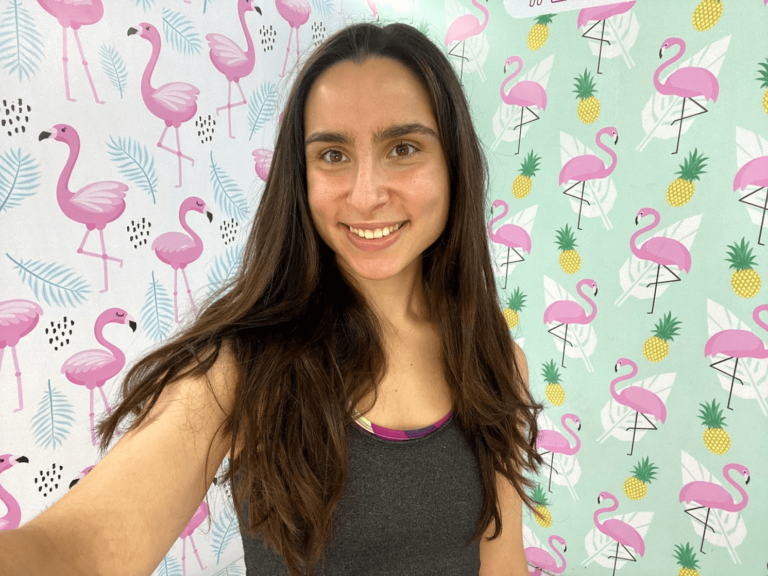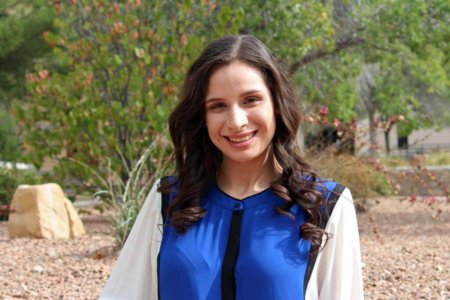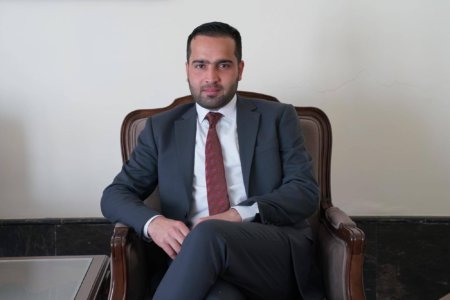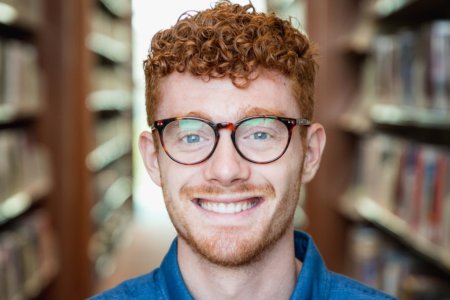
Christina White, who recently graduated from West Virginia University, never imagined she would be living in the Yucatan Peninsula, Mexico. She is now on a Fulbright scholarship, teaching English at a local public school and working in health and wellness for underserved youth and indigenous medicine.
It was her time abroad in Peru and Bolivia as a youth ambassador that brought to her attention the diversity of indigenous communities and the health challenges they faced. “My ultimate goal from living in Mexico is to provide culturally competent and justice-oriented healthcare to disadvantaged communities,” shares the aspiring physician.
Below we talk to the West Virginia University graduate about her plans for medical school, her Fulbright application and how she’s finding life abroad:
Walk us through your interest in biology and international studies.
As early as I can remember, I couldn’t get enough of the living world. I loved walks in the rain with my father and marvelling at rock formations at the state park.
Medicine was another centrepiece of my youth, I spent hours playing in the waiting room of my mother’s OBGYN clinic or curiously observing patient-doctor encounters when she brought me along to the hospital.

“I visited villages and nonprofit organisations dedicated to women’s empowerment while learning about advocacy and partnership among nations in the international community,” she says. Source: Kallie Nealis
Entering college, I chose biology as a major to help me prepare for the MCAT exam and medical school. My interest in international studies evolved at the same time and only recently, did I figure out how I’d intertwine these fields through global health.
Travelling to Peru and Bolivia in 2016, as a youth ambassador to South America, revealed a larger dimension to the topics I loved. This included health, nutrition, and environmental wellbeing.
I visited villages and nonprofit organisations dedicated to women’s empowerment while learning about advocacy and partnership among nations in the international community. I was intrigued by the diversity of indigenous communities and the distinct health challenges confronting them.
My Spanish studies in college and my work in translating at mobile clinics in Honduras only intensified my desire to mitigate health inequities, overseas and at home. When I chose my undergraduate majors, I aimed to merge my interests.
My ultimate goal from living in Mexico is to provide culturally competent and justice-oriented healthcare to disadvantaged communities.
What made you apply for the Fulbright Scholarship? Walk us through the steps you took and your plans under this programme.
Since I heard about the Fulbright from peers and advisors, I viewed it as the optimal means to educate myself and occupy a meaningful role in an immersive manner. I hope to refine my cultural competence through an in-depth experience.
I also wanted to exist in a different environment in a non-tourist capacity. As a bridge between my undergraduate studies and medical school, the Fulbright Scholarship would help me bring about future changes in myself — enhanced awareness, the ability to empathise with a key demographic, and the capacity to educate.
The application process was long and detailed so patience is a requirement. I began writing my statements about a year in advance.
It was hard to imagine that I would end up in the Yucatan Peninsula. I continually edited my statements, sought advice and prepared myself for a possible interview.

“My ultimate goal from living in Mexico is to provide culturally competent and justice-oriented healthcare to disadvantaged communities,” White says. Source: Christina White
I submitted a self-evaluation stating that I reached advanced Spanish proficiency with my professor sending an evaluation to verify. My uni’s scholarship office was an essential source of support throughout the process.
During the programme, I plan to design and carry out a community engagement project centred on health, nutrition and wellbeing. My original idea involved healthy cooking workshops with local youth and investigating natural remedies of the Mayan culture.
Due to COVID-19 restrictions, I’ll adapt my ideas to an online or socially distant format. It could possibly be in the form of a local volleyball tournament, workout classes, or outdoor conversation sessions.
Why choose to be an English teacher in Mexico?
Our permanent neighbour and trade partner, Mexico, stood out to me because of the deeply-rooted relationship we share now and how it affects human health. As a physician, I want to treat disadvantaged groups like immigrants and refugees.
Understanding what life is like in a region of Mexico would provide insight and first-hand experience including environmental factors, educational outcomes, and cultural trends. Moreover, I’m enthralled by Mexico’s richness of indigenous groups who practice traditional medicine and cultivate medical facilities.
I hope to learn from this about preventative ways to reduce chronic diseases and how certain methods could be adapted to the needs of communities like my home in Appalachia.

“As a physician, I want to treat disadvantaged groups like immigrants and refugees,” she says. Source: Kallie Nealis
What advice do you have for prospective applicants for the Fulbright Scholarship?
If you’re from a rural area or you don’t have international experience, don’t count yourself out. Find ways to obtain that experience using the resources at hand.
Do your research on the country you’re keen to go to and develop solid reasoning for your commitment to intercultural understanding in that context. Speak to past recipients and ask for advice.
Most importantly, clearly elaborate how your past experiences and future plans align with the betterment of that country’s relationship with yours. Give specific examples of projects you’d conduct plus justifications on how you would execute them.
Lastly, be humble and allow your creative side to shine. I love cooking and making a mess in the kitchen and I translate this into education, health and intercultural sharing. Convert your hobbies into real academic mechanisms of engagement while giving your application thorough time and attention.
Are there any cultural sites you’ve ticked off your bucket list?
Although I’ve only been living in Mexico for less than a month, a local highlight is the Convento de San Bernardino de Siena in Valladolid. There are daily projections displaying the colourful history of the Spanish conquest and the Mayan resistance in colonial times.
I also enjoy strolling through Plaza Principal of Merida and the nearby Mercado San Benito where hoards of people amass to buy nearly anything imaginable. “Salbutes” (fried corn tortilla with shredded turkey, fresh vegetables and a spicy sauce) is delicious.
View this post on Instagram
For those on plant-based diets, I’m obsessed with “sope” (a thick masa tortilla with refried beans, tomatoes, avocado and salsa). There are also lots of vibrant local fruits like papayas, plantains, starfruit and dragonfruit.
Now that you’re living in Mexico, is there anything you miss from home? If so, how do you substitute it?
The sense of community and familiarity of my hometown but I’m actively recreating it in my new environment. A small example of how I generate community vibes is on my morning walks past the same tortilla shop. I always make a habit of stopping, saying hello, and chatting for a while.
What’s the local food like in Mexico compared to home? Tell us your most and least favourite.
Living in Mexico, the food is much more tropical than what I’m used to. There’s a big emphasis on corn as the chief ingredient in a tortilla instead of wheat flour.
Much of the food I eat here is grown in local gardens or farms which is a nutritious change. I’ve been eating new fruits like bitter orange and starfruit.
As a vegan, I’m getting used to beans and other vegetables as my protein sources instead of fake meat alternatives. I haven’t disliked anything I’ve tried so far and I’m working on increasing my tolerance for spice.
My favourite food, however, is simple. It’s papayas with deep orange flesh that we pluck straight off the tree in the backyard.
What’s one thing from Mexico you’re planning to bring back to your friends and family?
Besides memories and cultural knowledge, I’d bring back a suitcase full of chocolate if I could. The chocolate-making traditions predate European conquest as indigenous people prepared cocoa beans without sugar or dairy.
There’s actually a museum called Choco-Story that takes you through the ancient process of chocolate creation in this region. In one book, I read that original chocolate tasted like a blend of caramelised onion and coffee — the complete opposite of what we expect chocolate to taste like.

“I also enjoy strolling through Plaza Principal of Merida and the nearby Mercado San Benito where hoards of people amass to buy nearly anything imaginable,” White tells Study International. Source: Christina White
Tell us a bit about your hometown.
Morgantown is a vibrant nook of West Virginia that houses the new and the old. I now understand how instrumental it was in my exposure to alternate ways of being.
I was lucky to go to school with diverse students and eat at international restaurants often. At the same time, I felt connected to small towns in Appalachia as a short drive would bring you to rural areas.
If you came to visit, I’d take you to Cooper’s Rock and Raven Rock. From this bird’s eye vista, you can see the river that winds through the city, the dome of the uni coliseum, and an expanse of misty mountains on the horizon.
Lastly, give us three fun facts about yourself:
I make ice cream out of unconventional ingredients like avocados and bananas. My nine-year-old fully-grown dog is smaller than my cat. Last but not least, the hardest physical activity I’ve ever done is a hike to the top of Machu Picchu when I was 16.










